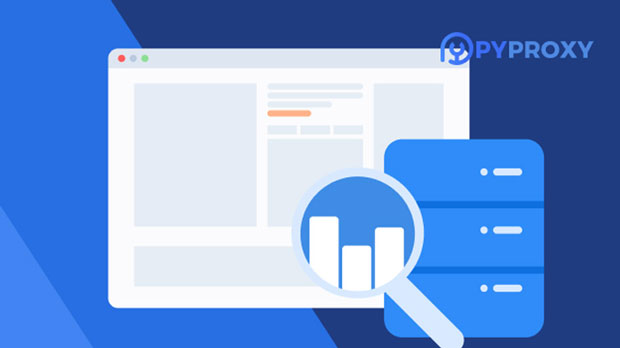Free proxies or paid proxies, which is better for long term use?
In the world of online privacy, security, and browsing efficiency, proxies play an important role. When it comes to choosing a proxy for long-term use, there are two primary options: free proxies and paid proxies. Each comes with its own advantages and disadvantages, which can significantly affect your internet experience. Free proxies are often seen as a quick, no-cost solution, while paid proxies are typically more reliable, secure, and feature-rich. In this article, we will delve deeper into both types of proxies, comparing them in terms of performance, security, privacy, and other critical factors to determine which is better suited for long-term use. Understanding Free ProxiesFree proxies are usually provided by various online platforms with the appeal of no cost to the user. These proxies are often used by individuals who need a simple way to bypass geographic restrictions, or those who want to remain anonymous while browsing the web.Advantages of Free Proxies:1. No Cost: The most obvious advantage of free proxies is that they do not require any payment. For individuals with limited budgets or those who only need occasional access to a proxy, free services can seem like an ideal solution.2. Simple to Use: Most free proxy services are easy to set up and require minimal configuration. They are convenient for casual users who just want a quick and hassle-free solution for browsing anonymously or accessing region-locked content.3. Variety of Options: Free proxies are widely available across the internet, providing users with many different server locations and access points to choose from.Disadvantages of Free Proxies:1. Low Security: Free proxies often lack strong encryption and other security protocols. This makes users more vulnerable to data theft, hacking, and surveillance, especially when accessing sensitive information such as online banking or personal accounts.2. Slower Speeds: Due to the large number of users relying on free proxies, the connection speed can be slower and more unreliable. With free services, there is less bandwidth available for each user, leading to frequent interruptions, buffering, or a generally poor browsing experience.3. Privacy Concerns: Free proxies often have questionable privacy policies. In many cases, they may log user activities or inject ads into your browsing experience. This raises concerns about data collection and how your personal information is being used.4. Limited Reliability: Free proxies are not always available, and they can go offline at any moment. They may be shut down by the provider or blocked by websites, leaving users with no way to access certain sites.Exploring Paid ProxiesPaid proxies, on the other hand, offer a more premium service with several advantages over free proxies. These proxies are provided by companies that offer subscription plans with various features, including higher speeds, better security, and improved reliability.Advantages of Paid Proxies:1. Enhanced Security: Paid proxies often come with higher security protocols, including strong encryption (such as SSL), to protect user data. These proxies are much less likely to expose users to hacking risks or surveillance, making them ideal for sensitive browsing, business transactions, or online purchases.2. Faster Speeds and Better Performance: Since paid proxy services generally have fewer users on each server, users experience better speeds, less congestion, and a smoother browsing experience. This is particularly important for activities like streaming, gaming, or any task that requires high-speed internet.3. Privacy and Anonymity: Paid proxy services tend to have clearer and more transparent privacy policies. Many paid proxy providers do not log user data or activities, ensuring greater anonymity for those who value their privacy. Additionally, these services often do not inject ads into browsing sessions, unlike free proxies.4. Reliability and Consistency: Paid proxies offer a much higher level of reliability. Servers are maintained and updated regularly, minimizing the chances of going offline unexpectedly. Additionally, they are more likely to bypass geoblocks and be less prone to restrictions.5. Dedicated Support: Paid proxies often come with customer support options, ensuring that users can get help in case of issues. This is a crucial feature, especially for businesses or individuals who rely on uninterrupted proxy service for daily operations.Disadvantages of Paid Proxies:1. Cost: The primary disadvantage of paid proxies is the cost. Subscriptions can range from a few dollars per month to hundreds of dollars depending on the service’s features. For users on a tight budget, this can be a significant drawback.2. Possible Overuse of Resources: While paid proxies often offer faster speeds, the resources available can still be shared among multiple users, especially in case of lower-tier plans. This can sometimes lead to a decrease in performance, though it is typically still better than free services.Which Proxy is Better for Long-Term Use?When considering proxies for long-term use, several factors must be taken into account: security, speed, privacy, reliability, and cost. Both free and paid proxies have their pros and cons, but for long-term usage, paid proxies are generally the better choice. Here’s why:1. Security and Privacy: Long-term use often requires a higher level of security and privacy. Free proxies tend to compromise on both, leaving users vulnerable to potential data theft or privacy breaches. Paid proxies, on the other hand, prioritize the protection of user data, making them a more reliable choice for those who value their privacy.2. Consistency and Reliability: Free proxies are not always reliable, and their performance can fluctuate. In contrast, paid proxies offer much more consistent performance, which is essential for users who rely on proxies for extended periods. Whether for business or personal use, uninterrupted access is critical.3. Speed and Performance: If you plan to use a proxy for a long period of time, the performance will become a significant factor. Free proxies are often slower due to the large number of users, whereas paid proxies provide better bandwidth and faster speeds, ensuring that you can continue using the internet without interruptions.4. Support and Maintenance: Paid proxy services typically offer customer support and maintenance, which ensures that any issues you encounter will be addressed quickly. Free proxies often do not offer this, meaning users are left to troubleshoot problems on their own.5. Long-Term Investment: While free proxies are attractive due to their lack of cost, they often end up being a hindrance in the long term due to their security risks, unreliable service, and limited features. In contrast, investing in a paid proxy ensures better long-term service and value for money, especially when considering the protection and enhanced performance it offers.ConclusionFor those who require a reliable, secure, and high-performing proxy solution for long-term use, paid proxies are undeniably the better choice. They provide better security, faster speeds, and greater privacy, which are essential for anyone who depends on proxies for regular or sensitive activities. While free proxies may be tempting due to their lack of cost, their limitations and potential risks make them unsuitable for long-term use. Investing in a paid proxy service ensures peace of mind, better performance, and a much more reliable online experience over time.
2025-01-30

























































